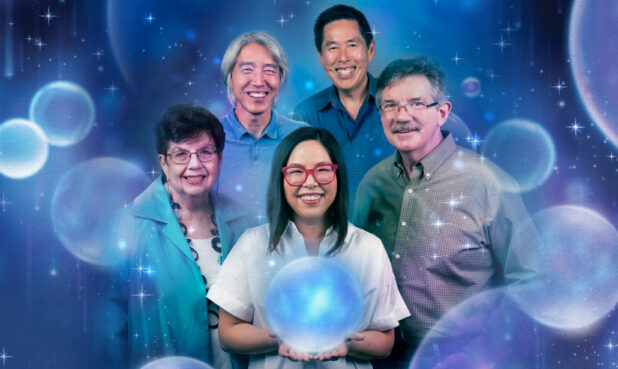There’s an iconic moment in Academy Awards ceremony history that is not about the presentation of an Oscar—it’s about the presentation of eight of them.
In the late 1930s, the Academy of Motion Pictures Arts and Sciences was perplexed with what to do with Snow White and the Seven Dwarfs. There was certainly no arguing that the 1937 Walt Disney Productions feature was a mastery of animation. But should it be judged by the same standards as its live-action contemporaries? Once more, Disney had mastered how to make animated films that were both box office successes and awards staples, as evident by his sweeping the Best Short Subjects, Cartoons category. Did a chance at a Best Picture Oscar win give him carte blanche to add another award to his ever-growing legacy?
“In the classic period of the 1950s and ‘60s, live-action filmmakers would never bother themselves with animated features … It was considered too small potatoes for a lot of them.”—Tom Sito
So it came to be that in 1939—a year after Snow White received a nomination for Best Musical Score—AMPAS awarded Walt with an honorary Oscar at the 11th Academy Awards, making a big to-do with then-10-year-old Shirley Temple presenting one award surrounded by seven tiny golden men. This performance, while adorable, most likely prophesized what are now at least two pivotal facts about Oscars history: While Disney’s studio still has unbeatable brand recognition, it’s also the only one of the old Hollywood guard never to win a Best Picture Oscar. And—more importantly—an animated feature has yet to win that category.
“Up until the late 1990s, the problem was the American feature animation market was very spotty,” says Tom Sito, a member of the Academy’s Board of Governors and former president of The Animation Guild. “It was generally the Disney product and the one other.”
That isn’t to say animated films haven’t put up some excellent contenders, with a few breaking through to the Best Picture category. Disney’s Beauty and the Beast made history when it became the first animated film to crack the category during the 1992 Oscar ceremony, an event that Gary Trousdale, the film’s co-director, says still shocked him despite it having its premiere at the prestigious New York Film Festival and also eventually becoming the first animated film to ever win the Golden Globe award for Best Motion Picture—Musical or Comedy. (Another Disney favorite, The Little Mermaid, made history the year prior as the first animated film to be nominated in that category).
“Half the people were like this is so great that it gets recognition and the other half were like ‘why hasn’t this happened before?’,” recalls Tim Gray, the senior vice president and awards editor of industry magazine Variety.
But it would be several years before we’d see another animated film in that race again. More importantly: When Pixar’s Up and Toy Story 3 did receive respective Best Picture nominations in 2010 and 2011, they both came after an AMPAS rules change expanded the category to include 10 films as opposed to only five (in 2011, that rule was tweaked again, now allowing for a sliding amount of five to 10 nominations, depending on voting results). Although reportedly put in place to allow for stunning works of genre-centric live action movies like director Christopher Nolan’s 2008 blockbuster The Dark Knight to receive recognition as well as animated films, these amendments have not resulted in a nominations windfall for our sector of the industry.
Too Many Eggs in One Basket
Veteran awards campaigner Andrew Stachler, who is the founder and CEO at Max Stax Media, says that while it’s no easy feat for any film to get nominated for Best Picture, animated features have an even harder time marketing themselves in that race. He says this is partly because they don’t have the luxury of catering to below-the-line workers like costume designers and hairstylists who vote for Best Picture as well as for their specific categories.
“I think there’s a way you campaign these things that speak to it,”he says, explaining that there’s also a layer of marketing films to niche committees who usually decide the nominees for specific categories before the entire Academy votes.
There’s also the risk that putting too many eggs in the Best Picture basket could eliminate the chances of an (all considering) easier win for Best Animated Feature. Itself a relatively new category that was put in place starting with the 2002 Academy Awards, Best Animated Feature is both an honor as well as a bitter reminder for people like Beauty and the Beast’s Trousdale, who says animation filmmakers only got the category after kicking “in the door to even have them notice us.”
“Animation people would like to be taken as seriously as artists as much as the live-action guys. Not to denigrate them any, but hey what about us?”—Gary Trousdale
Stachler says a lot of campaigns come down to old-fashioned budgeting concerns: Does an animated film’s studio have the money and the resources to devote to promoting it in both the Best Animated Feature and Best Picture categories? The trick, he says, is to find a way to “prove that you’re worthy of really being Best Picture and also seed in people’s minds that if they’re not quite sure that it should be Best Picture then they don’t feel like they can give Best Animated Feature to someone else.”
It’s also extremely important to get actors on a film’s side. After all, SAG-AFTRA makes up the biggest voting contingent of AMPAS and Stachler says that, from a prognostication standpoint, the Screen Actors Guild Awards’ Outstanding Performance by a Cast in a Motion Picture category “is a huge precursor for Best Picture.” Trousdale and others say this strategy has been an uphill battle for animated films, as some actors have fretted in the past that the medium is too different from live-action films for them to be treated the same.
It is possible that this sea change is coming.
Animation expert Sito reminds that in “the last five years, we’ve been averaging about 26 animated releases in the United States per year and there are [also animated] films from all around the world.” Because of the advent of streaming, Sito says, we now have more “platforms for more product and opportunities for more filmmakers.”
“In the 1970s, animation was the Disney feature and what we called the Saturday Morning getup: four hours of animation in between cereal commercials,” he says. “Now, there’s primetime animation, there’s streaming animation, there’s feature films. There’s so much product being done and it’s all very good.”
Blurred Lines
As visual effects and computer animation improve, so too do we enter murky waters on what even constitutes an animated film.
“Having really good directors and really good production values on live-action films is terrific, but it’s a different thing,” stresses Trousdale. “Even though there’s a lot of VFX in [movies like Disney’s 2016 remake of The Jungle Book, it’s difficult to call them animated movies. Once you do that, then how much of Lord of the Rings is animated? How much of Gravity is animated? How much of Life of Pi is animated? It gets hazy. It used to be a lot clearer, but the lines got very blurry.”
Sito jokes that “to me, Avatar’s live action is five minutes of Sigourney Weaver smoking a cigarette in a laboratory. The rest of it is an animated film.”
He adds that he sees a benefit in the increase of live-action filmmakers’ embracing of traditionally animated works, like Guillermo del Toro’s Netflix series Trollhunters and cinematographer Roger Deakins’ work as a consultant on films like WALL·E or the How to Train Your Dragon pictures.
“In the classic period of the 1950s and ‘60s, live-action filmmakers would never bother themselves with animated features,” Sito says. “It was considered too small potatoes for a lot of them.”
Meanwhile, Stachler points out an example like Andy Serkis. The English actor’s mastery of performance capture work has been lauded since his days in the Lord of the Rings film series. This year, he was on shortlists for an Oscar nomination for his work in director Matt Reeves’ science fiction visual effects feat, War for the Planet of the Apes. That recognition from other actors (and voters) theorizes that the same could happen for a star of an animated film.
Changing Times
“I do think as the younger generation gets older, a lot of the prejudices against certain kinds of films is going away,” says Gray. “As the audience changes, I think Academy voters are getting a little more open minded about what constitutes art.”
Case and point: This year, the Academy changed its rules and, for the first time, the selection of Best Animated Feature is open to all Oscar voters—not just those from the animation branch. Trousdale says this is a good thing because it “feels like animation may be a bit more accepted and recognized as grown-up (or mainstream) film when all the filmmakers are involved, and not just the secret arcane club of animation people.”
The ideal situation, sources say, is that Americans—and specifically Academy voters—will follow the lead of countries like Japan, which sees animation as an elevated art form and not just something for kids.
“Animation isn’t a genre; it’s a medium,” says Trousdale. “A lot of people have been saying that for years. But those people are mostly in the animation business.”
This might simply be about educating the curious.
“One of the most frequent questions I’d get was how do you direct an animated movie?” says Trousdale, whose post-Beast credits include 1996’s The Hunchback of Notre Dame and, since his move to DreamWorks Animation in 2003, several shorts centered around the character Shrek. “It all comes down to the choices because those mean what appears on the screen. Choices have to be made whether it’s live-action or animation: what time of day is it? What are the costumes? What’s the weather? What is the emotion? Those are identical questions. Animation people would like to be taken as seriously as artists as much as the live-action guys. Not to denigrate them any, but hey what about us?”
And for those AMPAS audience members who still have trouble believing that a film that they watched as a kid—or more recently with their kids—is a Best Picture contender, we have one request: Rewatch them.
“One of the big things that animation has that live action doesn’t is it’s got shelf life,” says Trousdale, explaining that aside from rarities like Gone with the Wind or The Wizard of Oz, it’s hard for live-action films to compete with as much staying power. “You can go back and you can look at animated films and find animated films from 50 or 60 years ago in kind of good profusion.”
Pinocchio viewing party anyone?






